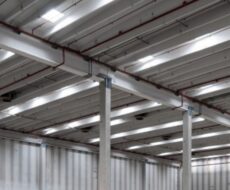
March 30, 2023
How the obligation of a collective construction contract for the Sismabonus works.
The obligation to apply the national collective contract for construction work came into force on 27 May in the case of works that qualify for the main construction bonuses for a total amount exceeding 70,000 euros, therefore including the Sismabonus.

New obligation in force for building bonuses
The new obligation was included in Law no. 51/2022 amending Article 1, paragraph 43 -bis, of Law no. 234 of 30 December 2021, which states:
“For the construction works referred to in Annex X to Legislative Decree no. 81 of 9 April 2008, the benefits provided for by Articles 119, 119-ter, 120 and 121 of Legislative Decree no. 34 of 19 May 2020, converted, with amendments, by Law no. 77 of 17 July 2020, as well as those provided for by Article 16, paragraph 2, of Legislative Decree no. 63 of 4 June 2013, converted, with amendments, by Law no. 90 of 3 August 2013, from Article 1, paragraph 12, of Law no. 205 of 27 December 2017, and Article 1, paragraph 219, of Law no. 160 of 27 December 2019, can be recognized only if in the deed of assignment of the works it is indicated that the construction works are carried out by employers who apply the national and local collective agreements of the construction sector, stipulated by the employers’ and trade unions’ associations which are comparatively more representative in terms of national pursuant to Article 51 of Legislative Decree no. 81 of 15 June 2015. The provision referred to in the previous paragraph applies with reference to works whose overall amount exceeds 70,000 euros, without prejudice to the fact that the obligation to apply national and local collective agreements in the construction sector, signed by the comparatively more representative trade union and employer organisations, refers exclusively to construction works as defined in Annex X to Legislative Decree no. 81 of 9 April 2008.
The collective agreement applied, indicated in the deed of assignment of the works, must be shown on the invoices issued in relation to the execution of the works. The subjects indicated in Article 3, paragraph 3, letters a) and b), of the regulation referred to in Presidential Decree no. 322 of 22 July 1998, and those responsible for tax assistance of the centres established by the subjects referred to in Article 32 of Legislative Decree no. 241 of 9 July 1997, to issue, where applicable, the conformity approval, pursuant to Article 35 of the aforementioned Legislative Decree no. 241 of 1997, also verify that the collective agreement applied is indicated in the deed of assignment of the works and shown on the invoices issued in relation to the execution of the works. The Revenue Agency, in order to verify the indication of the collective agreement applied on the work award documents and on the invoices, can make use of the National Labour Inspectorate, the INPS and the Building Funds. The administrations and bodies involved carry out the planned verification activities with the human, financial and instrumental resources available under current legislation.”
The Revenue Agency and the CCNL
The Circular of the Revenue Agency no. 19/E 2022 has expressed its opinion on the legislation linked to building bonuses, which also includes interventions aimed at the seismic improvement of buildings.
As specified, the employer who carries out works for a total amount exceeding 70,000 euros is required to indicate in the work performance or procurement contract (which contains the deed of assignment of the works) that the construction works, referred to in Annex X to Legislative Decree no. 81 of 2008 (Consolidated Work Safety Act, TUSL), are carried out in application of the national and territorial collective agreements of the construction sector, stipulated by the comparatively most representative employer and trade union associations on a national level pursuant to Article 51 of said TUSL.
Annex X of Legislative Decree no. 81 of 2008 requires that they should be construction or civil engineering works “1. Construction, maintenance, repair, demolition, conservation, rehabilitation, renovation or equipping works, transformation, renovation or dismantling of fixed, permanent or temporary works, whether of masonry, reinforced concrete, metal, wood or other materials….”
“Construction” works include the works necessary to ensure seismic improvement of the buildings subject to the interventions.
It is, however, the responsibility of the customer of the works to request the inclusion of the indication of the collective agreements or to verify their inclusion, since the omitted indication in the deed of assignment determines the non-recognition of the tax benefits envisaged by law.
This obligation must be respected even if the contract for the assignment of the works provides that the construction works are subcontracted.
The adequacy of the work
It should also be noted that for purposes other than deductibility of expenses, the carrying out companies are obliged to comply with the provisions regarding the verification of adequacy of the incidence of labour employed in carrying out the construction works, pursuant to the decree of the Minister of Labour and Social Policies no. 143 of 25 June 2021, as well as the obligation to verify technical professional suitability referred to in Article 26, paragraph 1, letter a), of the TUSL.
The invoices
The aforementioned paragraph 43-bis also establishes that the collective contract applied, indicated in the deed of assignment of the works, must also be noted on the invoices issued in relation to the execution of said works.
Failure to indicate the collective agreement in the invoices issued in relation to the execution of the works – however mandatory pursuant to the aforementioned paragraph 43-bis – does not, however, result in non-recognition of the tax benefits, provided that this indication is present on the deed of assignment.
To which deductions does it apply? Is it applicable to interventions relating to the Sismabonus?
These provisions apply to taxpayers who benefit directly in the tax return or who opt for alternatives to direct use, for example, the following benefits are noted:
- adoption of anti-seismic measures referred to in Article 16, paragraphs 1-bis to 1-septies of the legislative decree. no. 63 of 2013 – such as seismic retrofitting or improvement interventions;
- Superbonus, provided for by Article 119;
- recovery of the building heritage referred to in Article 16-bis, paragraph 1, letters a), b) and d), of the TUIR;
- energy efficiency referred to in article 14 of the legislative decree n. 63 of 2013;
In order to strengthen the controls on compliance with these obligations already in a phase prior to the use of the tax benefit connected therein, article 43-bis provides that subjects who affix the conformity approval, pursuant to Article 35 of the aforementioned Legislative Decree no. 241 of 1997, verify, among other things, that the collective agreement applied is indicated on the deed of assignment of the works and shown on the invoices issued in relation to the execution of the works and their state of progress.
Controls
In terms of controls, the provision provides that the Revenue Agency, in order to verify the indication of the collective agreement applied in the work deed of assignment documents and on the invoices, “may avail itself” of the National Labour Inspectorate, the INPS and of the Building Funds.
Entry into force
The aforementioned paragraph 43-bis “becomes effective from 27 May 2022 and applies to the construction works indicated therein started after that date.”
In essence, when seeking access to important tax deductions such as the Sismabonus, it is necessary to know all the details in order to carry out seismic redevelopment interventions, also regarding the company you choose, including the application of an employment contract in good standing, since, in case of irregularities, one can face considerable penalties.






